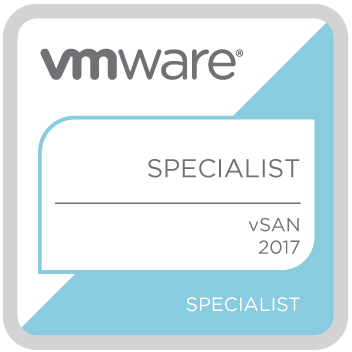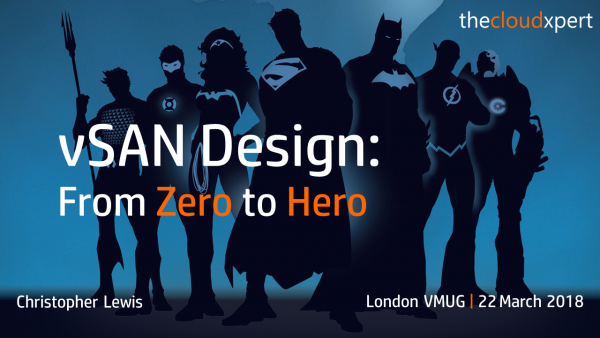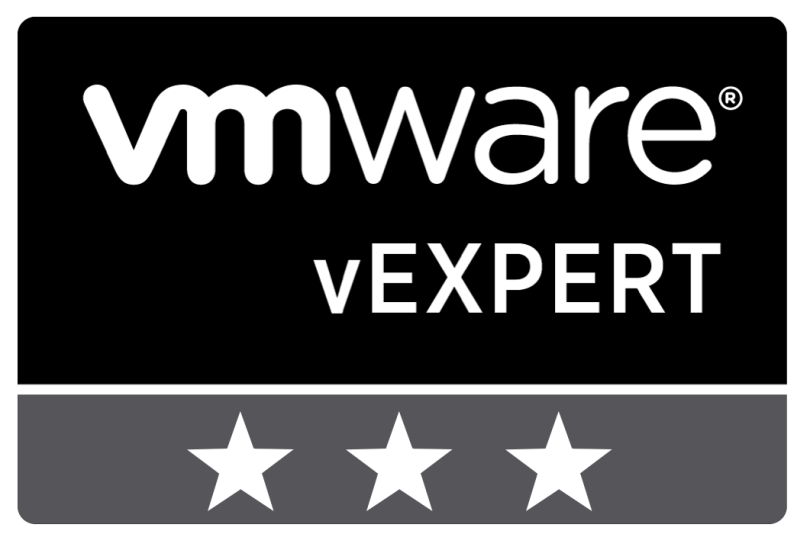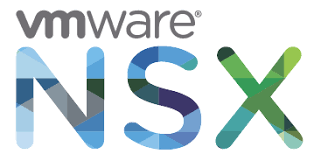Category : VMware

Written by Christopher Lewis on June 6, 2018 .
I am extremely humbled to make the cut for this 2018 intake of the vExpert vSAN program.

Written by Christopher Lewis on April 5, 2018 .
This post is part of a series of posts as part of the vSAN Specialist exam. In this post will we will cover Objective 2.2 - Describe vSAN Requirements.

Written by Christopher Lewis on March 26, 2018 .
Last week I had the pleasure to present to the guys at the London VMUG for the first time. On vSAN no less!

Written by Christopher Lewis on March 9, 2018 .
Humbled to be chosen for VMware vExpert 2018!

Written by Christopher Lewis on March 8, 2018 .
Today was a big day for VMware and VMware Cloud Services with their global Cloud Briefing. Read my thoughts on what was said!
AWS Cloud Cost Insight Log Intelligence VMConAWS VMware VMware Cloud Services VMware vSAN VSAN Wavefront

Written by Christopher Lewis on January 22, 2018 .
I realise I am a little late to the party with 2017 reflection posts, but I am going to do one anyway.
Written by Christopher Lewis on December 12, 2017 .
This is a series of posts covering the replacement of vRealize Automation SSL Certificates. This post cover replacing the vRealize Orchestrator Certificate.
Certificates VMware vRealize Automation vRealize Orchestrator

Written by Christopher Lewis on December 11, 2017 .
This a series of posts covering the replacement of vRealize Automation SSL Certificates. This post cover replacing the vRealize Automation IaaS Manager Service Certificate.
Certificates VMware vRealize Automation vRealize Orchestrator

Written by Christopher Lewis on December 11, 2017 .
This is a series of posts covering the replacement of vRealize Automation SSL Certificates. This post cover replacing the vRealize Automation IaaS Web Service Certificate.
Certificates VMware vRealize Automation vRealize Orchestrator
- Introducing the Super Metrics Repository
- Creating Super Metrics for Counting Ascendent/Descendent Object Metrics in a List View
- Creating a Custom Resource Action - Part 1: Getting Started & API Discovery
- Operating a Private Cloud - Part 3: Creating a Pricing Card in VMware Aria Automation
- Operating a Private Cloud - Part 2: Creating a Pricing Card in VMware Aria Operations

